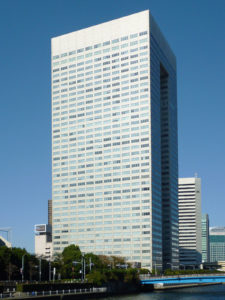Gone are the days, when mankind still managed to survive without the help of high tech equipment and power systems. Life in the 21st century would have been vulnerable if we didn’t have access to communication equipment to transfer signals, medical equipment to carry out surgeries, and most importantly, power systems to fuel up the machines. And, amongst the growing advancement in electronic products, Toshiba, a Japanese multinational corporation, has sailed the world through a wave of premiere wide-ranging devices, starting from household appliances to social infrastructure systems. The company has its headquarters based in Tokyo, Japan, with a robust number of subsidiaries.
The First Step, Tanaka Engineering Works
In 1873, Hisashige Tanaka, a renowned engineer of that time, was given the charge to build a telegraphic equipment to enhance the development in Japan. This contract led him to establish Tanaka Seisakusho (Tanaka Engineering Works), in 1875, the first Japanese company to build telegraphic equipment. The company also produced various electrical devices like switches for the communication systems. The company, later, came under the control of Tanaka’s adopted son.
On the other side, Japan still didn’t have enough technology to build its own electric lamps. But, in 1878, Ichisuke Fujioka, a student of Imperial College of Engineering, under the guidance of Prof. William Ayrton built Japan’s first arc lamp. He also built Japan’s first power generator with the help of Miyoshi Shoichi, a worker from Tanaka Seisakusho. Thus, in 1890, Hakunetsu-Sha Co., Ltd was established by Fujioka to produce light bulbs.
The Growth

After the death of Tanaka in 1881, Tanaka Seisakusho was partly acquired by General Electric, followed by the acquisition of the company by Mitsui Bank in 1893, renaming it as Shibaura Seisakusho. Both the companies, Shibaura Seisakusho and Hakunetsu-Sha Co Ltd, were at their best phase when the Great Kanto earthquake hit the city and took away a lot of lives. A lot of employees of these two companies fall victim to this calamity, and hence, suffered a major loss.
During the 1930s, the government put a ban on the production of home appliances and shifted its interest to make war equipment. In 1939, Tokyo Denki (previously known as Hakunetsu-Sha) and Shibaura Seisakusho were merged to form Tokyo Shibaura Denki (now Toshiba) with General Electric Company holding 24% share.
The company expanded during the time of war, as it supplied military needs, radios and generators. During the postwar period, the company again started focusing on producing electrical and electronic equipment, and it expanded its business by exporting the machinery to Southeast Asia.
From the 1950s, Toshiba started growing exponentially and established a lot of industries. In 1984, the company was rebranded as Toshiba, replacing Tokyo Shibaura Denki. During the late 1990s, the company established further new firms, including Toshiba Music Industries, Toshiba International Corporation, Toshiba Electrical Equipment, Toshiba Chemical, and many more. The company was also responsible for developing some of Japan’s first electronics. The company built Japan’s first TAC digital computer followed by transistor television and microwave oven colour video phone, MRI system, DVD, and sub-notebook personal computer. These are some of the few inventions that helped the company pioneer the electronics industry.
2000-Today
To meet the growing demand in the North American market, Toshiba signed an agreement with Orion Electric in 2001 to supply TV and video products for the company. In 17th October 2006, Toshiba made one of the greatest acquisitions in the history of the company by acquiring Westinghouse Electric Company, the world’s largest nuclear power company for $5.4 billion. Toshiba had a 77% share of the company while The Shaw Group and Ishikawajima-Harima Heavy industries had 20% and 3% share, respectively. In January 2009, Toshiba bought the Hard Disk Drive business of Fujitsu.
On 16th May 2011, Toshiba announced the acquisition of Landis+Gyr for $2.3 billion, followed by the acquisition of IBM’s point-of-sale business $850 million. In December 2013, Toshiba established its own manufacturing unit in India after acquiring Vijai Electricals Limited Plant, Hyderabad, India. In January 2014, Toshiba acquired OCZ Storage Solutions, and in the same year, Toshiba and United Technologies came in a joint venture and expanded it outside Japan. Since then, Toshiba has acquired a lot of other companies, and even, faced many scandals. The company sold Westinghouse as it suffered a wide loss in 2017.
Currently, Toshiba produces one of the finest electronic products and services in the entire world and is getting stronger day by day. The company has around 140,000 employees as per the statistics of 2019. It believes in creating more efficient products in future and thrives for excellence.

Annasha Dey is an NIT student, who apart from studying engineering is also a content writer. She has a great interest in photography, writing, reading novels, and travelling as well. She is a foodie who loves socializing and hanging out with her friends. She is also a trained Kathak dancer and a big fashion enthusiast. Dey also loves watching TV series, which includes F.R.I.E.N.D.S. and Big Bang Theory. To be a better writer she prefers to read more
